Hanoi 18 year old son was diagnosed with late stage stomach cancer, couple begged doctor to hide the results, so son can rest assured to receive treatment.
A couple in Ha Nam took their son to K Hospital (Hanoi) for examination in early April. The 18-year-old son had abdominal pain for many months, lost weight, and had to drop out of school. The scan results diagnosed the patient with late-stage stomach cancer, and the doctor said that surgery was not possible, and chemotherapy was only given to shrink the tumor.
When the doctor invited them into the room to announce the results, the two parents almost collapsed. Seeing their son sitting in the hallway, pale skin, purple lips, constantly nauseous, not knowing his condition, the father begged the doctor to hide the results, lying that his son only had a common illness.
"My professional principle is not to hide anything from patients, but as a doctor, I cannot calmly give bad news," said Dr. Ha Hai Nam, Deputy Head of Abdominal Surgery Department I, saying this was a haunting case because the patient was too young and the disease had a poor prognosis.
Similarly, Dr. Than Van Thinh, Hanoi Oncology Hospital, also encountered a situation where a patient’s family asked him not to disclose the diagnosis results to the patient. The reason was that they did not want their loved one to struggle, worry, collapse, become depressed, or even abandon treatment.
In medical terms, this suggestion is called “collusion between doctors and family members” in withholding information from patients. In Western countries, the concept of patient autonomy requires that doctors provide patients with all information relevant to their diagnosis and treatment options, allowing them to make informed decisions. However, in Asian countries, including family members plays an important role in treatment decisions. Loved ones want to protect patients from the truth and from feelings of despair and hopelessness. This is all the more important, as many people perceive cancer as a death sentence, with the disease synonymous with a reduced quality of life and ultimately death.
In fact, studies at cancer care centers around the world have found that most patients want to know their diagnosis. Experts say that both doctors and family members often underestimate how ready patients are to be. Revealing a cancer diagnosis does not negatively impact quality of life and may even be associated with better treatment outcomes.
Like the 18-year-old male patient above, he was aware enough to understand his health condition. "K Hospital is the 'capital' of cancer treatment and there is no reason for a normal person to be in this hospital. Therefore, the more the patient is hidden, the more worried he becomes, even distrusting the doctor, stopping treatment, causing death to come faster," said Dr. Ha Hai Nam.
After the consultation, Dr. Nam first talked to the patient's family to gauge their feelings before talking to her about her illness. Knowing that the patient was mentally weak, easily moved, and often felt sorry for himself, the doctor chose to avoid talking too much about the severity or nature of the illness, but instead stated that the condition was "bleeding ulcers, anemia, progressive illness, needing early treatment". The doctor also limited the use of some words that could cause emotion such as cancer or malignancy. After many positive conversations, the patient was reassured to undergo chemotherapy, and her health is currently improving.
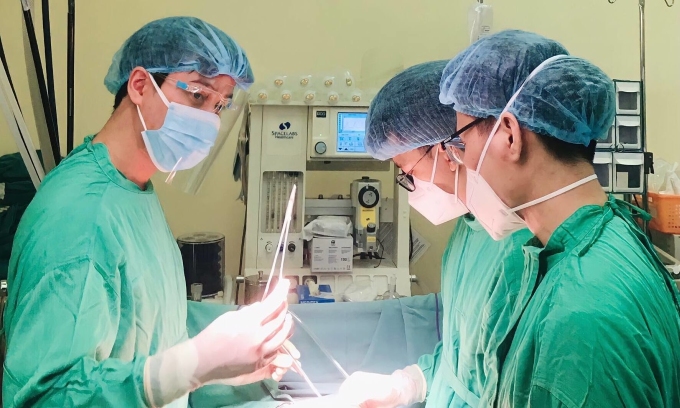
Doctor Nam performs surgery on a patient. Photo: Provided by the doctor
According to Dr. Nam, many people are able to hide their illness but can still guess, and it is an extremely painful, demoralizing process, gnawing at the pain in solitude.
"It is not right to think that hiding the patient as much as possible to give the patient a fighting spirit," said Mr. Nam, citing a 55-year-old female patient who was diagnosed with a benign tumor at a lower level. Later, the tumor metastasized to the ovary and required surgery. The patient's family did not inform the patient but arbitrarily transferred her to a higher level. At the K Hospital, Dr. Nam explained that the tumor had spread and could not be operated on, so she was transferred to a local hospital for palliative care.
"At this time, the patient knows his condition and quickly collapses, no longer has the will to fight, making the last days of his life painful and haunting for the whole family," the doctor said.
According to doctors, when a person does not clearly understand their condition, they often carry doubts throughout the treatment process. Many patients tend to leave, become violent, destructive, or even end their lives when they learn the truth. At this point, the doctor's advice is no longer valuable.
On the contrary, some people with a severe prognosis, understand their condition, and plan their final days peacefully and proactively, such as doing what they want to do, traveling, connecting with relatives, and spending time with their spouses and children.
How do doctors give bad news to patients?
Breaking bad news to someone is not an easy task, even one of the most difficult tasks and a lesson that doctors must practice throughout their lives. MD Anderson Cancer Center in the US compiled a 6-step technique (SPIKES), often applied by medical staff, as follows:
S is the design of private conversation, comfortable seating to create a pleasant atmosphere, even prepare tissues for patients.
P is an assessment of the patient's perception of his or her health, such as "how do you feel?", "do you know why the doctor ordered a CT scan?", or "do you know what the outcome of treatment will be?"
I is to get information by listening to the patient's opinion with questions like ''Do you want the doctor to explain or spend more time talking about the treatment plan and results?''. Let the patient decide the level of information they need to know so that the patient feels confident and empowered, thereby also helping the patient to control themselves better.
K is to convey knowledge and information to the patient, in positive, easy-to-understand language, encouraging the patient to ask questions.
E is to demonstrate empathy by observing the patient's emotional expressions, identifying the causes of those emotions, and encouraging the patient about their strengths and other support resources.
Finally, S is to ensure that the patient is clear on the issues, ready for treatment, and not to forget to instill reasonable hope in the patient.
In fact, cancer treatment is more effective for patients who are mentally strong, optimistic, and have faith in their medical team and in medical advances. When doctors practice and apply “bad news” techniques effectively, they will help patients gain that important mental weapon.
Doctor Bui Quang Loc, Center for Nuclear Medicine and Oncology, Bach Mai Hospital said Patients need to be explained to understand that cancer is a malignant disease but early treatment is very effective. In addition, cancer is no longer a death sentence as previously thought. Surgical methods, chemotherapy and radiotherapy, as well as immunotherapy are increasingly advanced, helping patients improve and prolong their lives, even cure the disease.
"Doctors must put themselves in the patient's shoes to know what they should do, and from there, accompany and share to help patients face the truth," said Mr. Loc.
It is estimated that more than 300,000 Vietnamese people are living with cancer. The number of patients tends to increase. In 2018, there were 165,000 new patients, in 2020 this number was 182,000, with 122,690 deaths. Accordingly, the three common types of cancer in Vietnam are lung, liver, and stomach, all of which have high mortality rates. Meanwhile, when patients are detected at a late stage, doctors cannot intervene, and can only provide palliative treatment.
Minh An
Source link



![[Photo] Prime Minister Pham Minh Chinh chairs the Government's special meeting on law-making in May](https://vphoto.vietnam.vn/thumb/1200x675/vietnam/resource/IMAGE/2025/5/22/1c880aae96fd4e0894abc47a46fe19ba)



![[Photo] Prime Minister Pham Minh Chinh attends the groundbreaking ceremony of Trump International Hung Yen Project](https://vphoto.vietnam.vn/thumb/1200x675/vietnam/resource/IMAGE/2025/5/21/ca84b87a74da4cddb2992a86966284cf)


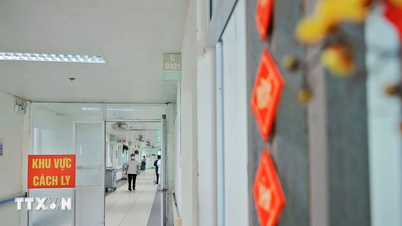



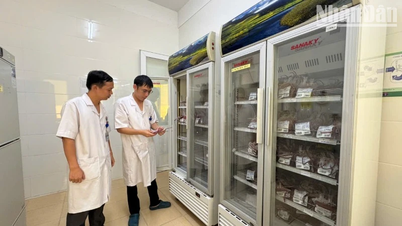

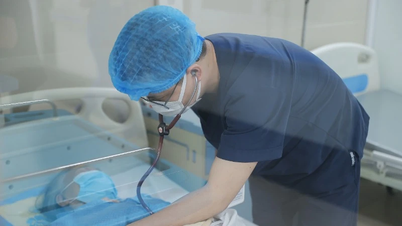
































































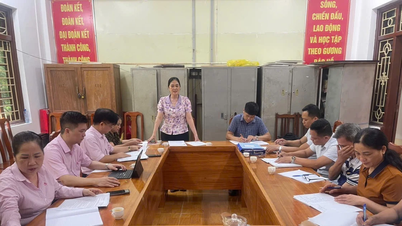










Comment (0)